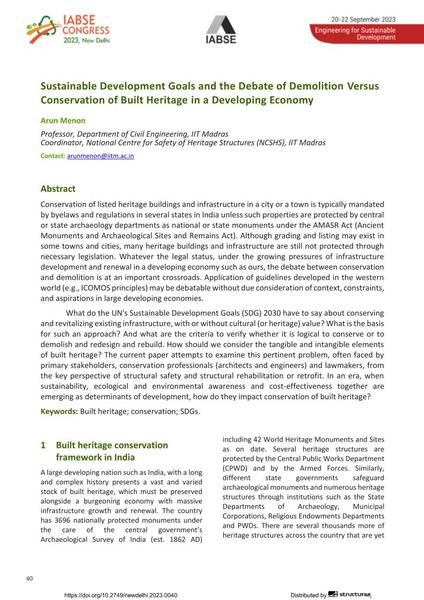|
Abstrait:
|
Conservation of listed heritage buildings and infrastructure in a city or a town is typically mandated by byelaws and regulations in several states in India unless such properties are protected by central or state archaeology departments as national or state monuments under the AMASR Act (Ancient Monuments and Archaeological Sites and Remains Act). Although grading and listing may exist in some towns and cities, many heritage buildings and infrastructure are still not protected through necessary legislation. Whatever the legal status, under the growing pressures of infrastructure development and renewal in a developing economy such as ours, the debate between conservation and demolition is at an important crossroads. Application of guidelines developed in the western world (e.g., ICOMOS principles) may be debatable without due consideration of context, constraints, and aspirations in large developing economies. What do the UN's Sustainable Development Goals (SDG) 2030 have to say about conserving and revitalizing existing infrastructure, with or without cultural (or heritage) value? What is the basis for such an approach? And what are the criteria to verify whether it is logical to conserve or to demolish and redesign and rebuild. How should we consider the tangible and intangible elements of built heritage? The current paper attempts to examine this pertinent problem, often faced by primary stakeholders, conservation professionals (architects and engineers) and lawmakers, from the key perspective of structural safety and structural rehabilitation or retrofit. In an era, when sustainability, ecological and environmental awareness and cost-effectiveness together are emerging as determinants of development, how do they impact conservation of built heritage?
|

